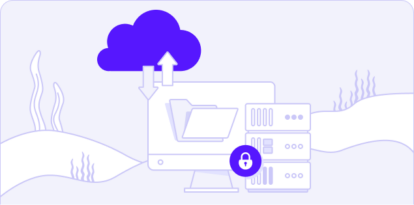ChatGPT and Data Leakage: The Hidden Risks of AI-Powered Conversations

Data leakage (a form of data exfiltration) is not a new topic in the cybersecurity world. For as long as there have been humans, there’s been the risk of sensitive information accidentally (or purposely) falling into the wrong hands. From company secrets to Personally Identifiable Information (PII), some information is restricted by company policies, while other data is governed by regulatory concerns like HIPAA and GDPR.
Because of the nature of data leakage and the potential repercussions of data leaving an organization’s control, preventing it has been an ongoing challenge across industries of all sizes. Cymulate’s Annual Usage Report has found that attempts to limit data exfiltration in many forms have not been successful—and have, in fact, worsened over the past three years.
The Rise of ChatGPT and Generative AI in Data Exfiltration
Enter OpenAI’s generative artificial intelligence (AI) platform, ChatGPT. ChatGPT is a project by OpenAI that enables a natural-language human interface for AI. It has the ability to answer complex questions quickly and accurately while learning from each interaction.
While this technology brings revolutionary advancements in human-machine interaction, it also introduces new risks: every day, hundreds of thousands of users unknowingly share sensitive information with ChatGPT, including PII and company-confidential data.
Unintended Data Exposure: A Growing Concern
For example, ChatGPT can provide general salary insights, such as the average salary for a software engineer in the United States ($91,000 per year). However, it can also return the average salary for a software engineer at a specific company, such as Google ($141,000 per year). While this data may be sourced from public platforms like Glassdoor, it exemplifies how company-specific information—intended to remain internal—can make its way into AI systems.
Now, consider employees inadvertently entering information about intellectual property, patents, customer health records, or other sensitive topics. AI models ingest and learn from this data, integrating it into their vast knowledge base, which could later resurface in responses to unrelated queries from different users.
The Challenges of Controlling AI-Driven Data Leakage
OpenAI is the most recognized vendor of generative AI, but it is far from the only one. Various AI platforms process millions of queries, aggregating data that was never intended for public exposure. While OpenAI explicitly warns users not to share sensitive information, enforcing these precautions is nearly impossible. Users may accidentally violate corporate policies, regulations, or even national laws.
Governments have already taken action: Italy and Syria have banned ChatGPT, and intelligence suggests that more countries may follow suit. The reasons range from concerns about unauthorized data sharing to the difficulty OpenAI faces in fully complying with regulations like GDPR.
How Organizations Can Mitigate the Risks of ChatGPT
So, what can an organization do to limit the exposure of controlled data when employees use ChatGPT, either accidentally or intentionally?
1. Implementing Technical Barriers
Organizations with firewall or proxy solutions that allow domain/IP filtering can block access to known ChatGPT websites while on corporate networks. However, this is not foolproof—IP addresses change, and employees may access AI tools via personal devices or mobile networks. Blocking all generative AI platforms could become a never-ending challenge.
2. Leveraging Advanced Security Tools
Advanced Data Loss Prevention (DLP) and Cloud Access Security Broker (CASB) systems may provide partial solutions. However, since AI interactions occur within simple chat interfaces, organizations would need to monitor all user communications from corporate networks to external systems.
This approach presents major challenges:
- Encryption Barriers: AI services operate over TLS-encrypted (SSL) connections, making monitoring difficult.
- Privacy Concerns: Actively reviewing AI queries could raise ethical and legal issues.
Careful collaboration between legal and technical teams is essential when implementing these measures. Organizations using this approach should also conduct continuous security validation with platforms like Cymulate, which offers simulations specifically designed for testing such defenses.
3. Strengthening User Awareness and Training
User education is one of the most effective ways to mitigate AI-driven data leaks. By training employees on the risks of sharing sensitive information with AI chatbots, organizations can significantly reduce inadvertent data exposure.
While compliance varies from person to person, a well-executed awareness program can lower the risk of data leakage—just as phishing awareness training has reduced the success of email-based attacks over time.
The Future of AI and Data Protection
Data leakage through ChatGPT is not a fundamentally new problem—organizations have always struggled with protecting sensitive information. However, generative AI significantly amplifies the risk. Unlike human conversations, AI never forgets and interacts with millions of users rather than a handful.
The best approach to mitigating this threat involves a combination of user training, proactive security controls, and AI usage policies. Over time, new security technologies will emerge to address AI-driven data leakage more effectively. Until then, organizations must take deliberate steps to safeguard their data in an era where AI is both a powerful tool and a potential liability.



